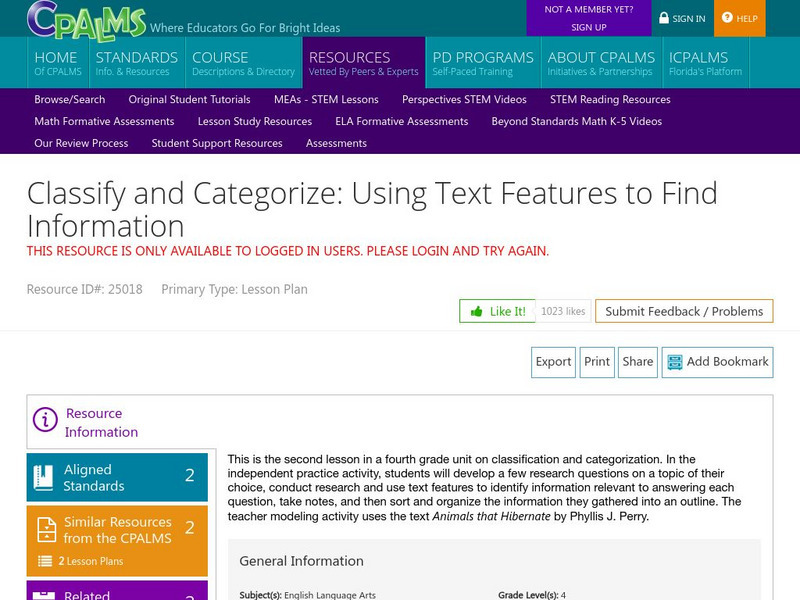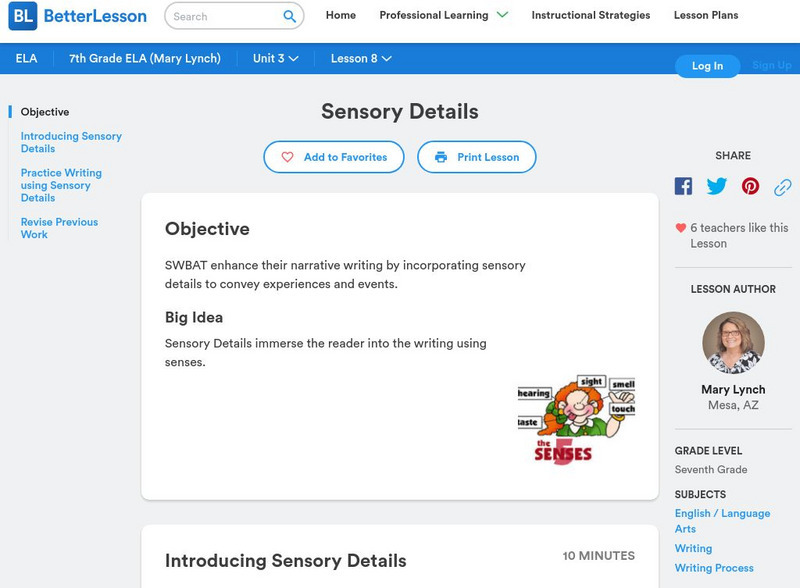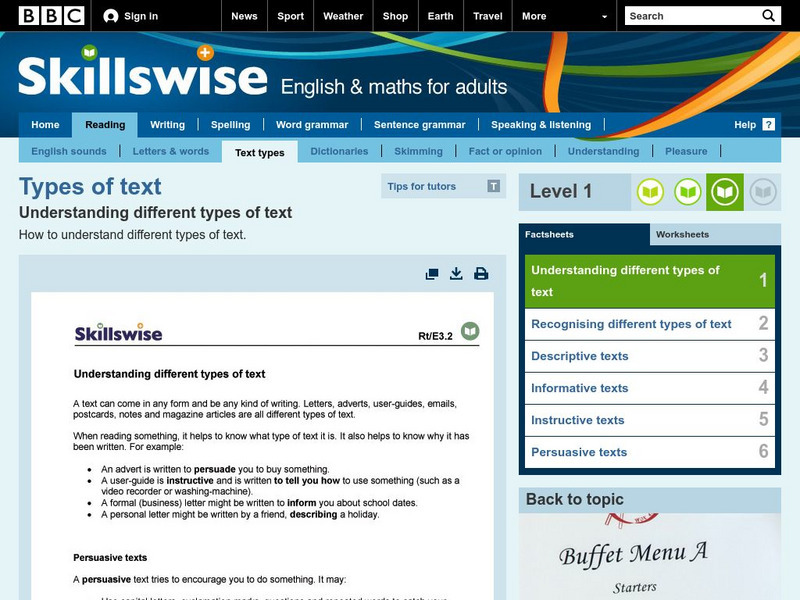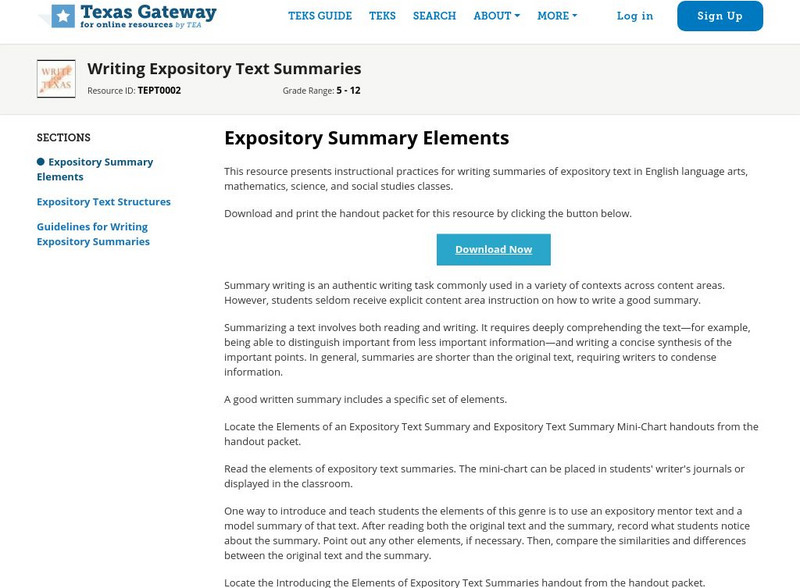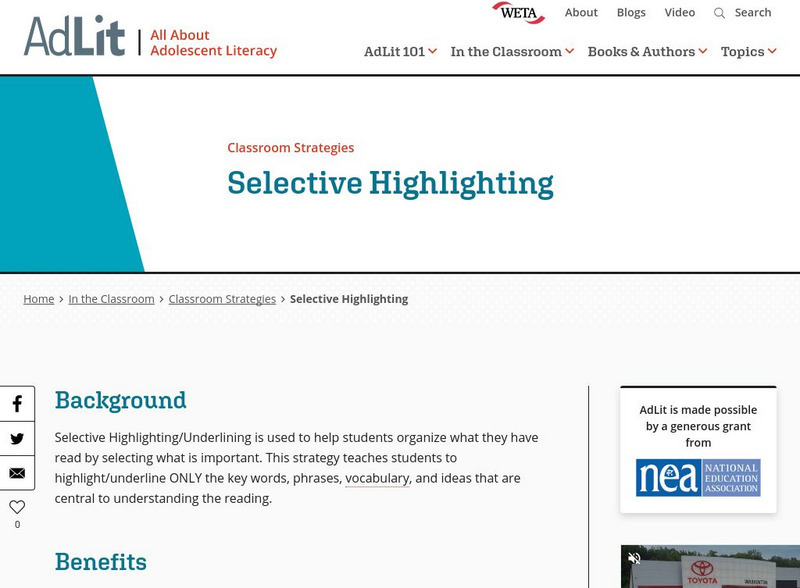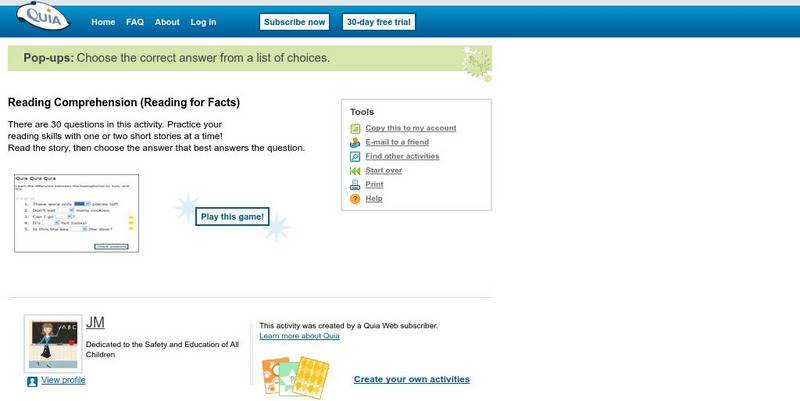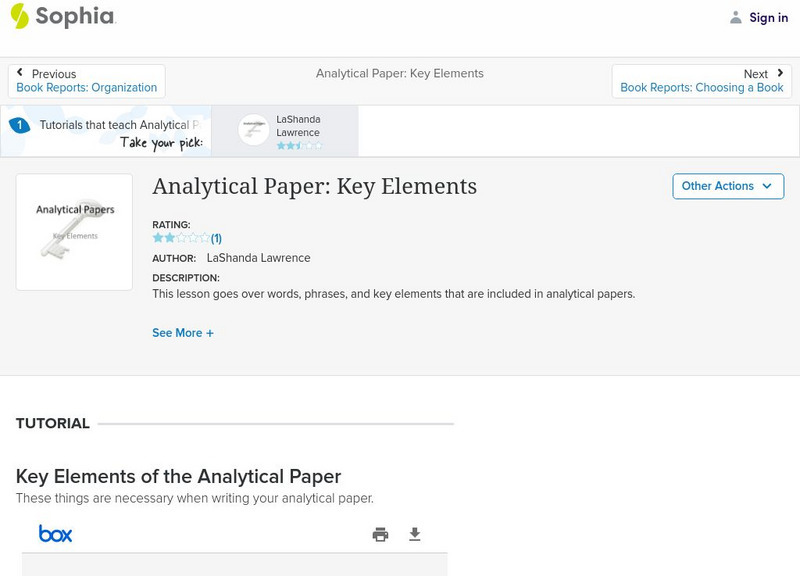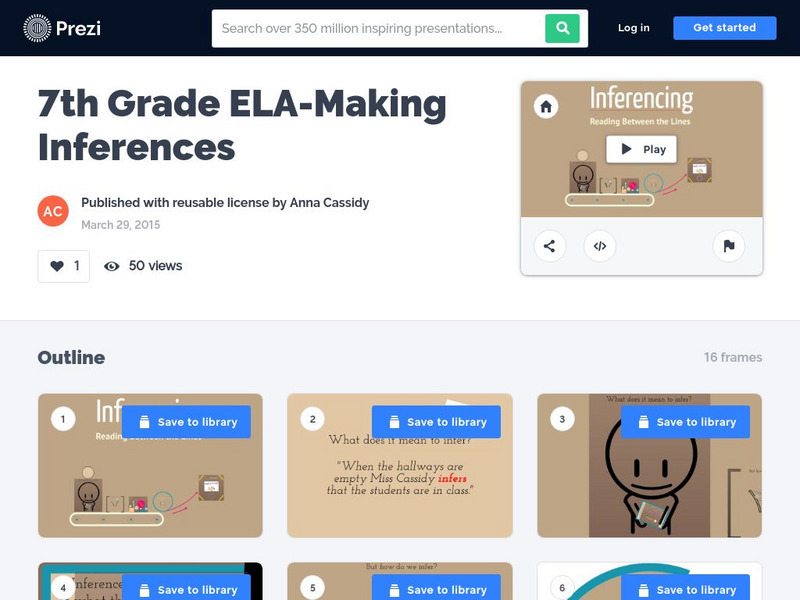CPALMS
Cpalms: Classify and Categorize: Using Text Features to Find Information
[Free Registration/Login Required] Students will develop research questions, classify information into an outline form, and use the features of nonfiction writing to identify information relevant to a research question.
International Literacy Association
Ila: Unlocking the Power of Informational Text With Five Creative Ideas
Five easy ways to help unlock the power of informational text for all students.
Better Lesson
Better Lesson: Sensory Details
Middle schoolers will learn how to enhance their narrative writing by incorporating sensory details to convey experiences and events. A power point presentation on sensory details is included.
Texas Education Agency
Texas Gateway: Teaching Expository & Persuasive Texts: Writing Expository Essays
In an expository essay, a type of informational text, the writer clarifies or explains something by using facts, details, and examples in a clear and concise way. To write an effective expository essay, students need a basic...
Texas Education Agency
Texas Gateway: Make Inferences in Informational/expository Text
[Accessible by TX Educators. Free Registration/Login Required] In this lesson, you will be taking a look at how authors of informational texts, such as expository texts, organize their writing and the effects that organization can have...
BBC
Bbc: Skillswise: Types of Texts Fact Sheets
Six printable fact sheets on how to understand and recognize different types of text including descriptive, informative, instructive, and persuasive.
CK-12 Foundation
Ck 12: 3.1: Expository Essay
[Free Registration/Login may be required to access all resource tools.] Learn to write an expository essay by providing evidence that supports a thesis, articulating concepts and information correctly and concisely, understanding the...
Texas Education Agency
Texas Gateway: Writing Expository Text Summaries
This resource presents instructional practices for writing summaries of expository text in English language arts, mathematics, science, and social studies classes.
Louisiana Department of Education
Louisiana Doe: Louisiana Believes: English Language Arts: Grade 7: Excerpts From Behind the Scenes
Seventh graders explore a tumultuous period in our country's history during which people questioned political decisions, morals, and social norms. This unit presents opportunities for students to examine different perspectives through...
AdLit
Ad lit.org: Classroom Strategies: Selective Highlighting
Selective Highlighting/Underlining is used to help students organize what they have read by selecting what is important. This strategy teaches students to highlight/underline ONLY the key words, phrases, vocabulary, and ideas that are...
AdLit
Ad lit.org: Multiple Texts: Multiple Opportunities for Teaching and Learning
Engaging all students in a themed study or unit is a challenge that teachers can resolve by using materials that match students' independent or instructional reading levels (Robb 1994, 2000). When students face textbooks that are above...
E Reading Worksheets
E Reading Worksheets: Text Structure: Reading Test 4
In this text structure reading test, students read passages and select the pattern of organization used; they sometimes have to explain their reasons using evidence from the text.
Other
Gallaudet University: English Works: Guide to Different Types of Essays
English Works site has suggestions on how to write an essay to convey helpful information. This site offers examples of eight different types of essays and graphic organizers.
Scholastic
Scholastic: Guidelines for Determining an Author's Main Idea
Follow the steps in this printable PDF to identify the main topic and key details of an informational text.
Other
Keys to Literacy: How to Write a Summary
Learn the seven steps to writing a summary of an informational text. Includes a summary template and completed examples.
Quia
Quia: Reading for Facts
This interactive quiz assesses students' reading comprehension skills of informational text passages. Students will read 30 short passages and answer question about a detail for each.
Annenberg Foundation
Annenberg Learner: Journey North: Reading Strategies: Make Inferences and Draw Conclusions
Learn how to go beyond the literal meaning of a text by using a list of guiding questions to make inferences and draw conclusions.
University of Ottawa (Canada)
University of Ottawa: Start With an Outline
This site from the University of Ottawa provides a brief, but effective, explanation of how to use a sentence outline to organize and shape your paper.
Other
Grammar book.com: Effective Writing
Brief list from The Blue Book with examples of how to take ineffective writing and transforming it into effective writing.
Sophia Learning
Sophia: Analytical Paper: Key Elements: Lesson 2
This lesson goes over words, phrases, and key elements that are included in analytical papers. W.11-12.4 Clear/Coherent Writing
Fun Trivia
Fun Trivia: The Four Types of Writing Trivia Quiz
A fifteen-question quiz in which the reader identifies a type of writing for each situation: argumentation, exposition, narrative, or description. Correct answers are displayed once answers are submitted.
Other
Prezi: Writing a Summary of Nonfiction
Writing a summary is an excellent way for students to demonstrate their understanding of nonfiction text. This slideshow explains what makes a good summary and delves into the four basic rules for writing a summary of nonfiction text.
Other
Prezi: Nonfiction Text Structures
Slideshow examines the five most common text structures used by authors to organize nonfiction writing.
Other
Prezi: 7th Grade Ela Making Inferences
Slideshow explores how to read between the line while offering examples for practicing.


